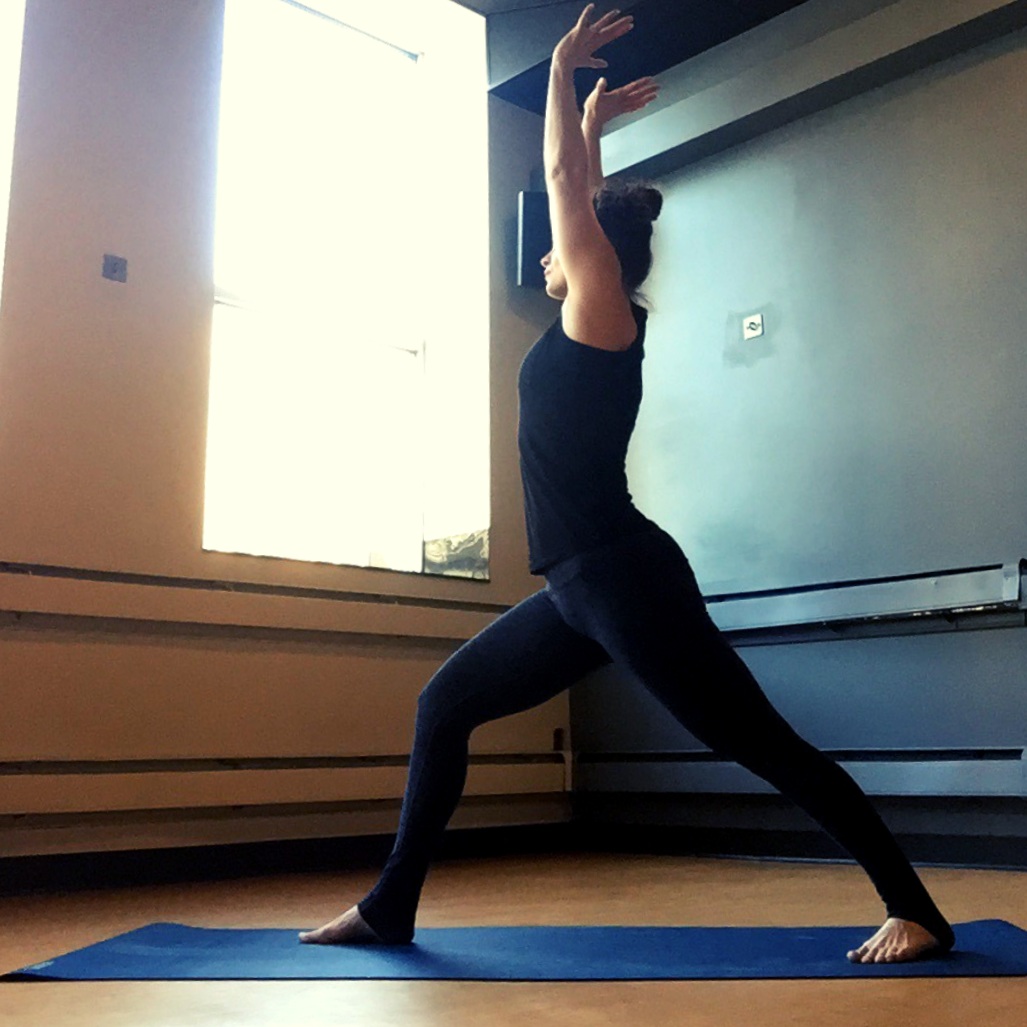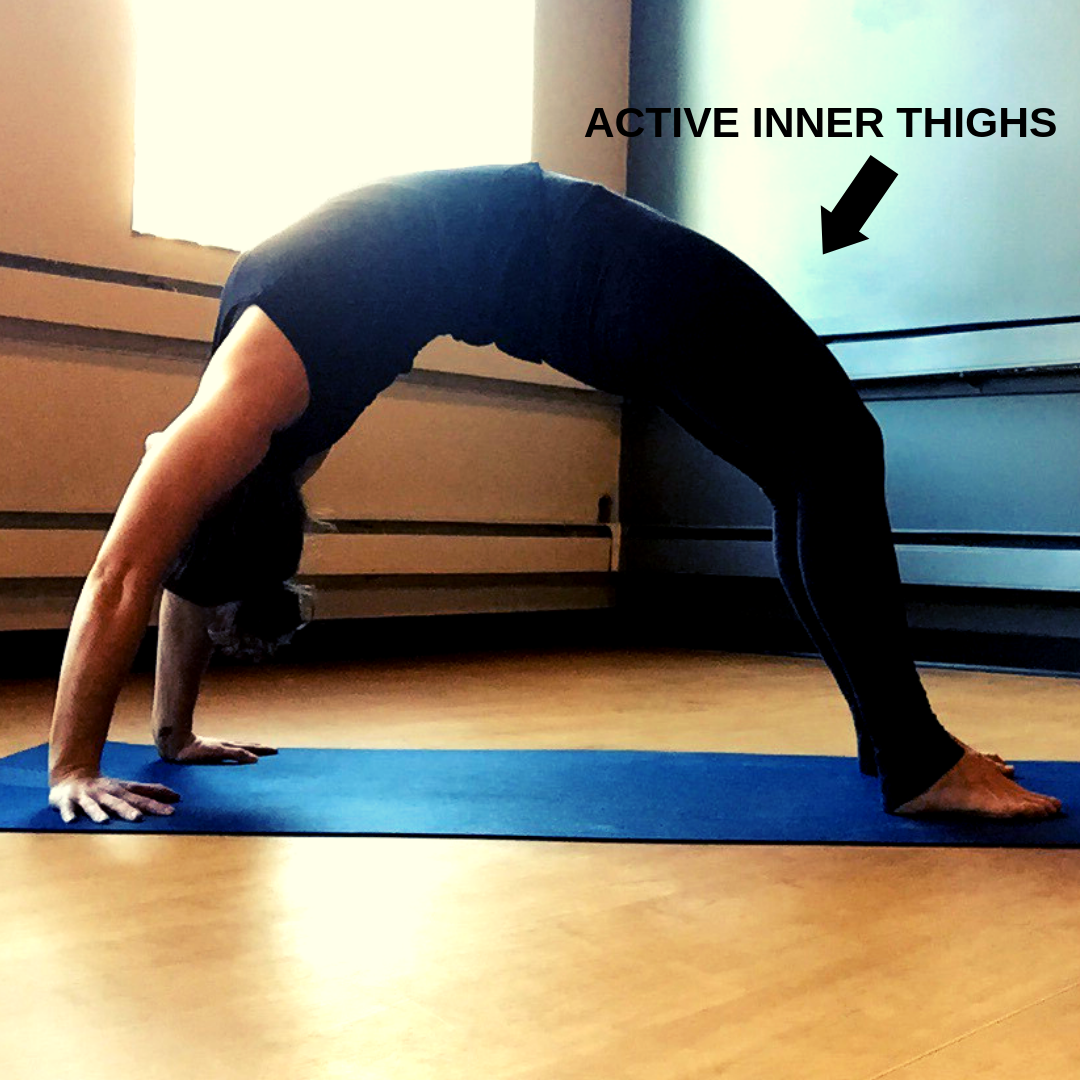Urdhva Dhanurasana - Wheel Pose
I’m not a strong backbender, but I really enjoy them. Wheel Pose is definitely up there as one of my favorite yoga postures. It’s one of my favorites because I love how it feels in body. I also appreciate how much my understanding of the shape has changed and morphed throughout the years. There’s something special about a posture that keeps you on your toes and forces you to learn and expand your understanding.
Want to prep your body for Wheel? Here’s some of my go-to preparatory postures and stretches:
Half Wind Removing Variation
It’s important to stretch the front line of your body, specifically your hip flexors when you’re preparing for Wheel. I love this variation of Half Wind Removing Pose! Place a block at its lowest height under your sacrum and extend one leg long onto your mat while drawing the opposite knee toward your shoulder. Be sure to press the heel of your extended leg down and forward toward the front edge of you mat to lengthen the extended leg’s hip flexors.
This can also be done without a block under your sacrum if the prop causes any discomfort.
Puppy Pose Variation
You’ll need two blocks at their lowest height about shoulder distance apart. From Table Top place the tips of your elbows on the blocks. Move your knees back a bit to create some space and lower your chest and forehead toward your mat. Your forehead may or may rest on your mat.
First, press your elbows down and send your tail back in opposition. After a few breaths like that, lift your chest up a few inches and hug your elbows in towards the midline while continuing to press your elbows down and reach your tail back. Not only does this help you stretch your shoulders for Wheel, but it helps you engage important muscles that are necessary for the backbend.
Warrior I Variation
It’s definitely not my favorite standing posture, but I appreciate some aspects of Warrior I. When setting it up in preparation for Wheel consider reaching your arms overhead, facing your palms towards the ceiling, and pressing upward. The push upward is the same feeling you want to recreate when upside down in Wheel.
Also, while in Warrior I, think of pulling your frontal hip bones up toward your lower ribs. (Think suspenders for those of you who have taken my class.) That same action will happen in Wheel.
Bridge Pose
The smaller sibling to Wheel Pose, Bridge, is an excellent prep posture before heading into Wheel.
When setting it up, considering placing a block between your inner thighs. Lightly squeeze the block to get your adductors, inner thighs, to activate. That same engagement will be duplicated when you set up Wheel Pose.
Want to learn more about Wheel Pose? Here’s some of my favorite details of the posture:
Engage Your Backside
You’ve probably been told to disengage or soften your glutes while doing backbends once or twice in a class. I prefer to teach the opposite. I think it’s very important to use your backside muscles to help elevate your hips and press your body into Wheel Pose.
Without clenching your glutes and hamstrings, activate the posterior chain muscles by grounding your feet and actively, isometrically drawing your heels back.
Trust me, engaging your backside in a mindful, intentional manner in Wheel Pose will not injure you.
Activate Your inner Thighs
Yes engaging your glutes and hamstrings in Wheel is good, however, I can’t disregard that sometimes engaging the backside of the legs causes the knees to wing outward. To combat the press of your knees toward your little toes, you also have to engage your inner thighs.
Imagine you had a yoga block between your thighs. As you engage your backside, at the same time squeeze the imaginary block between your legs. (Also, why imagine when you can actually place a block between your thighs?)
Use Your Hands and Arms to Push the Floor Away
Wheel does require some upper body mobility and strength. When in Wheel use your arms and hands to push the floor away. I find that this movement can be tricky for a lot of students. You’re upside down, in, most likely, an unfamiliar orientation so the idea of pushing the floor away while your arms are overhead can be challenging for your mind to compute. Similar to Downward Facing Dog, push your mat away rather than just resting on your arms.
Externally Rotate the Upper Arms
Once you figure out how to push the floor away, consider the position of your upper arm bones. This can be a tricky one. Since your arms are in an overhead position in Wheel Pose, you’re working to narrow your chest and widen your shoulder blades away from your spine. This takes time and some coordination to figure out.
Something I encourage students to do is turn the hands a little outward toward the long edges of your mat. The turn of your hands outward can help inform your arms to move in the direction of external rotation.
Craving a deeper understanding of Wheel Pose? Check out my three-part series: Wonderful Wheel.
A monthly subscription to Erin Jorich Yoga On Demand gives you access to all of the content. You can also rent each video individually.







